The right mulch can do wonders to improve your veggie garden.
Straw in particular offers a wide range of benefits that can make a drastic difference for the health and productivity of plants while saving you money and reducing labor.
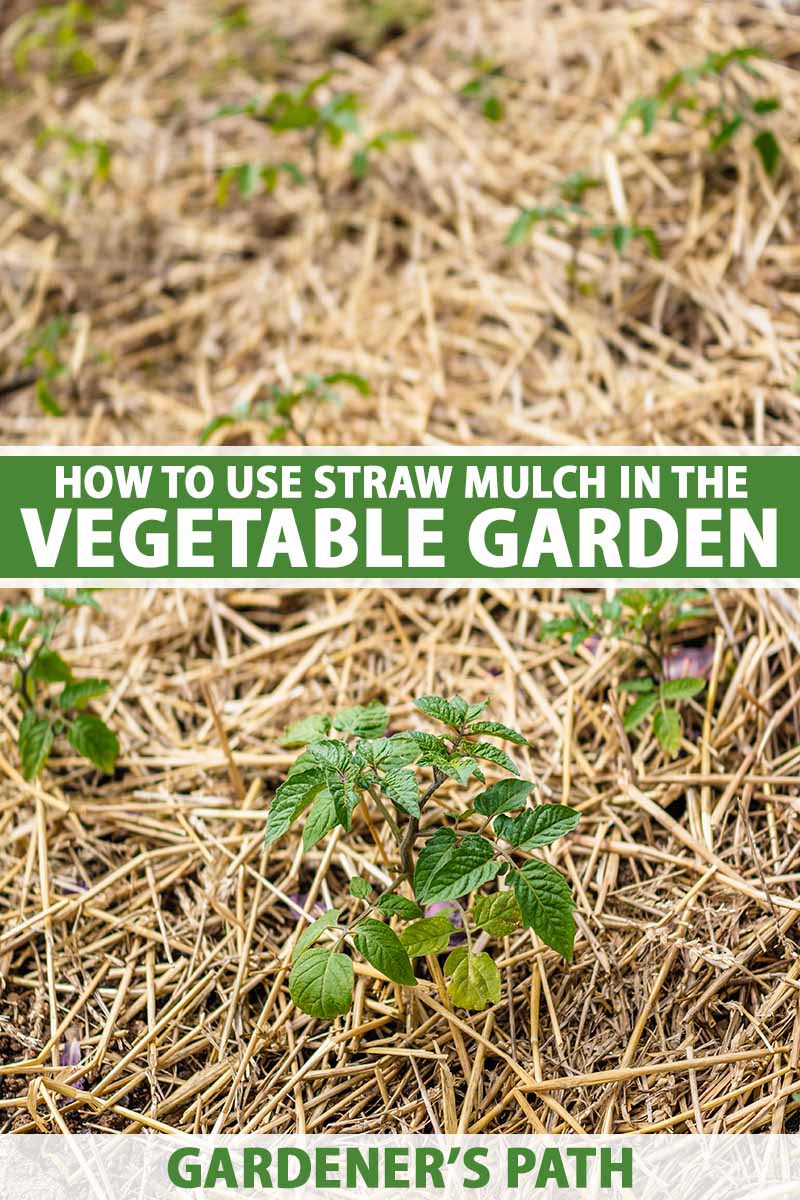
We link to vendors to help you find relevant products. If you buy from one of our links, we may earn a commission.
Continue reading to learn more about using straw mulch in your vegetable garden.
What You’ll Learn
What Exactly Is Straw?
Before going into the advantages of using straw to mulch your vegetable garden, it is useful to understand what exactly it is that you will be working with.
“Straw” refers to the dry stalks that are left behind after crops such as barley, rice, oats, or wheat have been harvested. After the heads are removed to make grain, the stalks are dried and bundled in bales.

These bundles can be broken up and applied to the garden as mulch, or used as a material that is layered on the soil surface in a garden to provide a number of benefits to growing plants.
Benefits to the Garden
Straw is an ideal mulch material for many reasons. It is light and easy to work with, fairly inexpensive, and readily available from local farms and garden centers.
It helps regulate moisture and temperature, reduces necessary weeding, and builds healthy soil. All of this equals less labor for you!
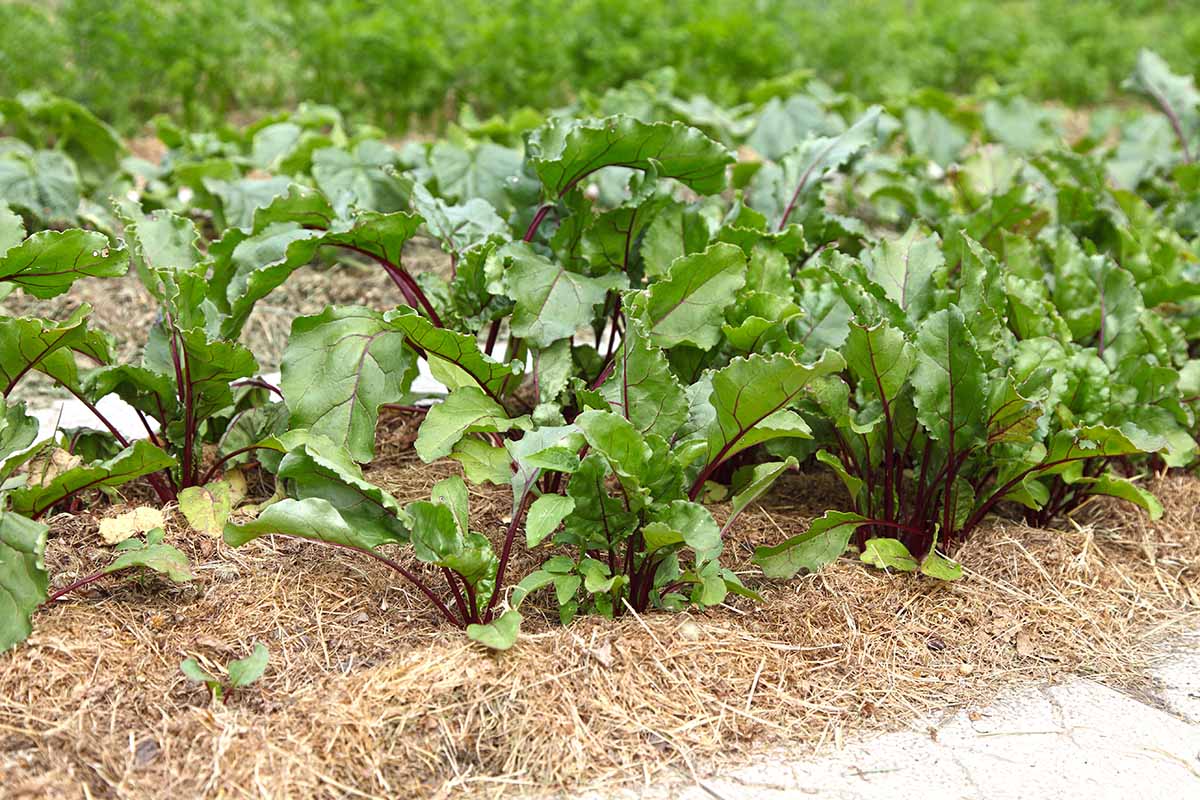
Let’s take a closer look at the benefits:
Lock in Moisture
Straw is particularly beneficial for helping to keep the soil evenly moist, which means better drainage and more protection for plants in times of drought or flood.
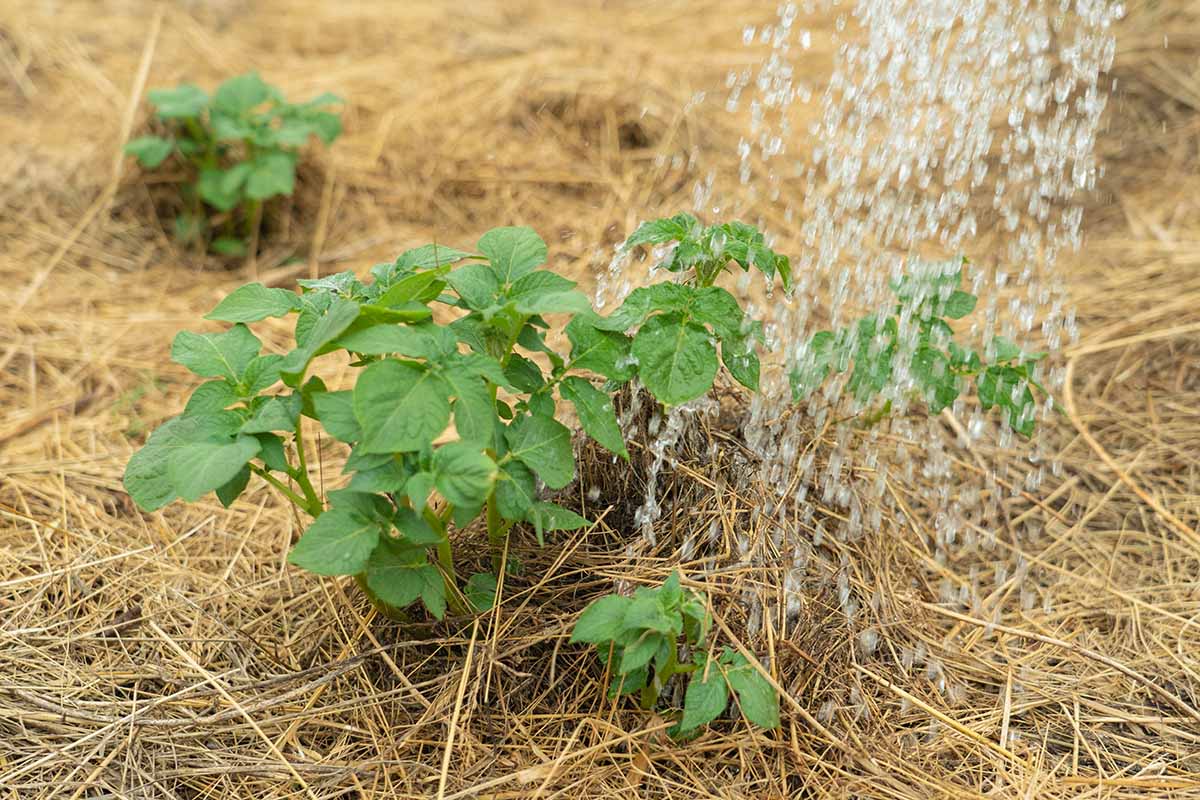
Because it helps to slow evaporation, you will find yourself watering much less often – think once a week, rather than every day or two.
At the same time, water will filter more slowly into the ground, lessening the impacts of flooding and preventing overly soggy soil.
Regulate Soil Temperatures
Mulching helps to maintain steady soil temperatures.
It acts as an insulating blanket for the soil, keeping plants cooler during hot summers and warmer during cold weather. This results in healthier plants and a longer growing season.
Less Time Weeding
While I have yet to see any organic mulch that is completely weed free, straw can come pretty close.
This is because it typically comes from crops that have previously had the seed heads harvested for grain. It is advantageous to the grower to remove as many of the seed heads as possible before the stalks are dried and baled.
When thickly applied, it can also cut down on weeding significantly by blocking the sun from reaching the soil, thus preventing weed seeds from germinating, and killing those seedlings that do manage to sprout.
Protect and Build Soil
Leaving the soil bare can harm those important microorganisms and beneficial insects that make it a healthy, nutrient-rich environment for plants to grow.
Think about it: When you go outside, you wear a hat and sunglasses to protect your skin and eyes from the sun. Just like us, worms and microbes also need protection from the sun.
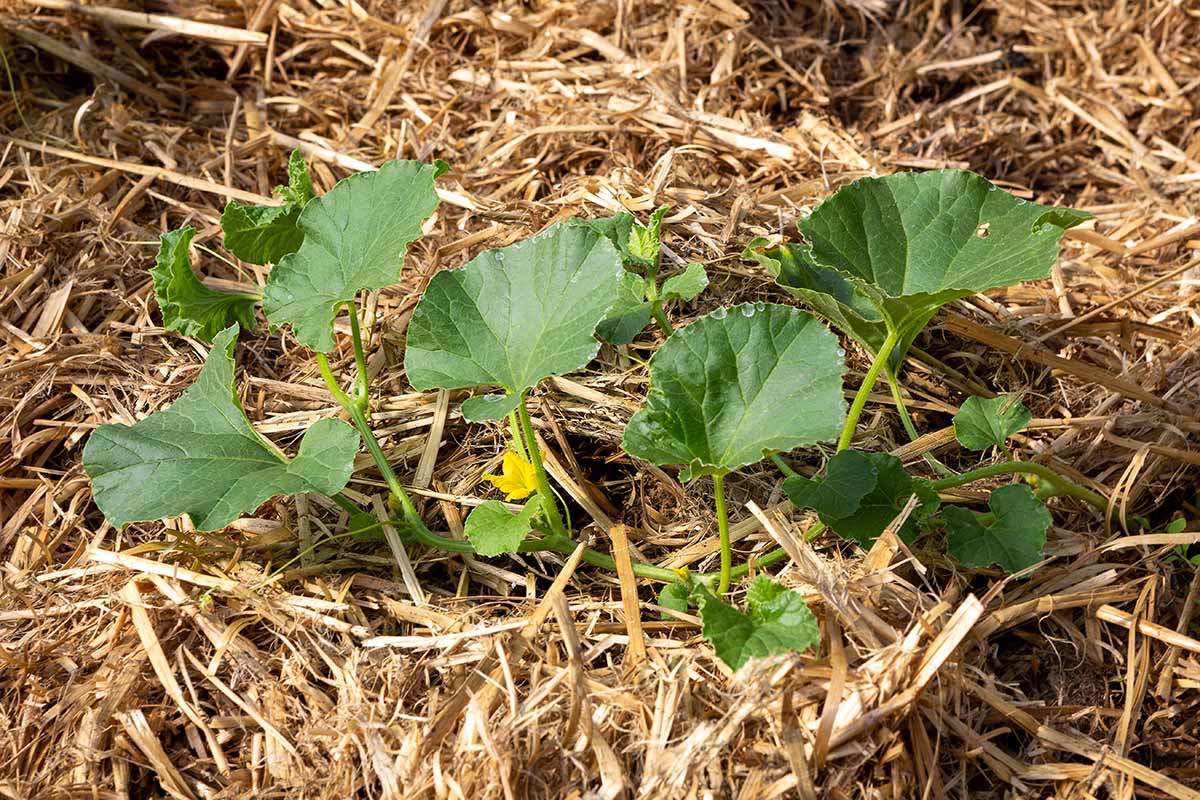
Have you ever noticed how a forest floor is protected by a thick layer of fallen leaves? We can easily provide the same benefit to our gardens by mulching.
Bare earth also means more erosion and nutrient leaching. When soil is unprotected, rain runs off quickly, carrying important nutrients with it. Mulching prevents runoff and helps to keep soil in place.
Not only can straw provide protection to microbes and reduce erosion, it actually helps improve the soil over time.
It breaks down relatively quickly, and as the material decomposes, it builds soil mass and releases nutrients that can nourish your plants as they grow.
Healthier soil means healthier plants, with less need for amendments or synthetic fertilizers.
Other Common Mulches
There are a number of other materials commonly used for mulch, such as bark, shredded leaves, hay, grass clippings, and even plastic.
While any type of mulch is typically better than using nothing at all, there are several reasons why straw is my personal go-to for the vegetable garden.
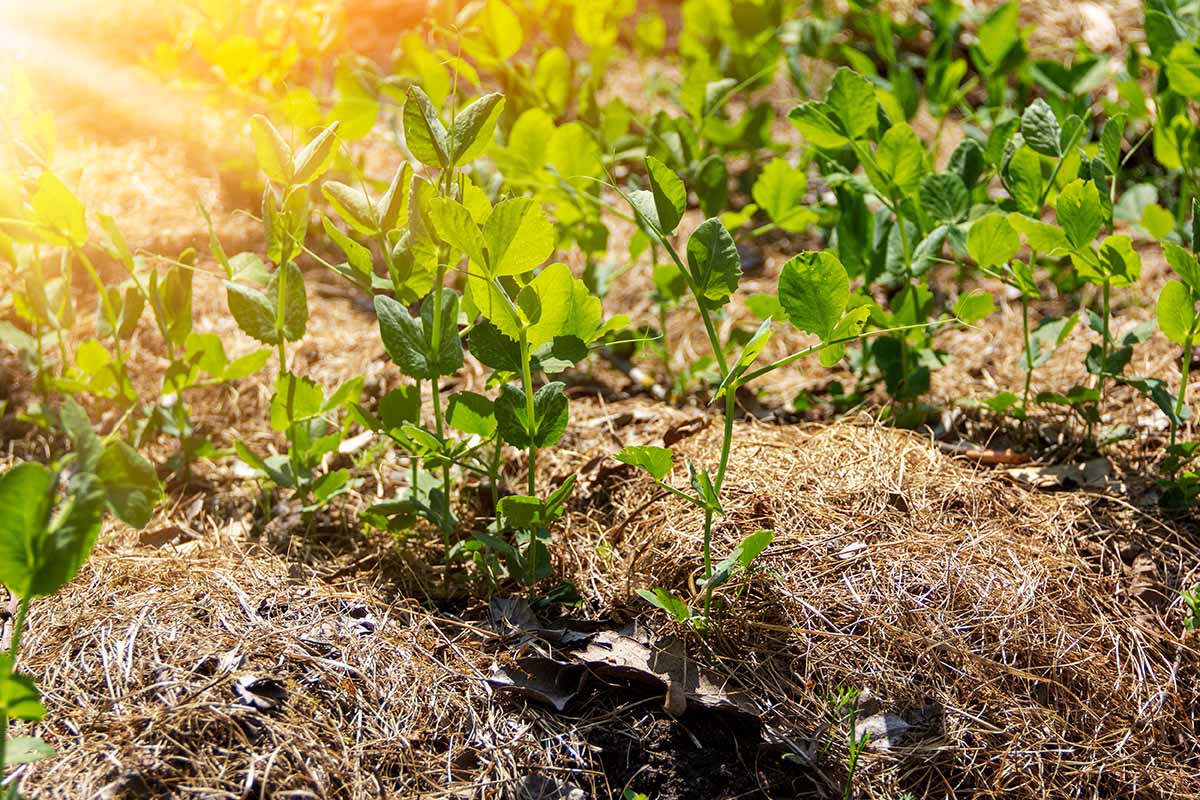
Many people confuse straw with hay. While these two materials may seem similar upon first glance, they are actually different in a few key ways.
While straw is a byproduct of grain crops, hay is a grass grown primarily as feed for livestock. It is often made from a combination of plants, and it is rarely cut before at least some of it has gone to seed.
In simple terms, hay is much more likely to contain weeds and invasive plants. It is also more likely to attract snails and slugs to your garden, especially if you live in a wet climate.
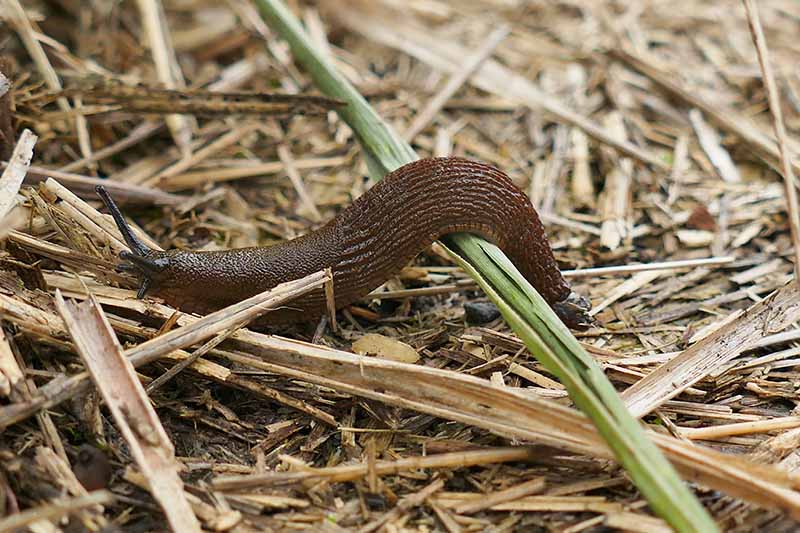
Straw is also a much better option than plastic. Not only is plastic a non-renewable resource, but it doesn’t provide many benefits other than weed suppression.
In order to make sure water can penetrate through to plant roots, you would need to buy plastic that is porous, which is expensive, and in my experience can actually make weeding more difficult when tougher weeds do manage to penetrate it.
Plastic also doesn’t build soil mass or provide any nutritive benefits to growing plants.
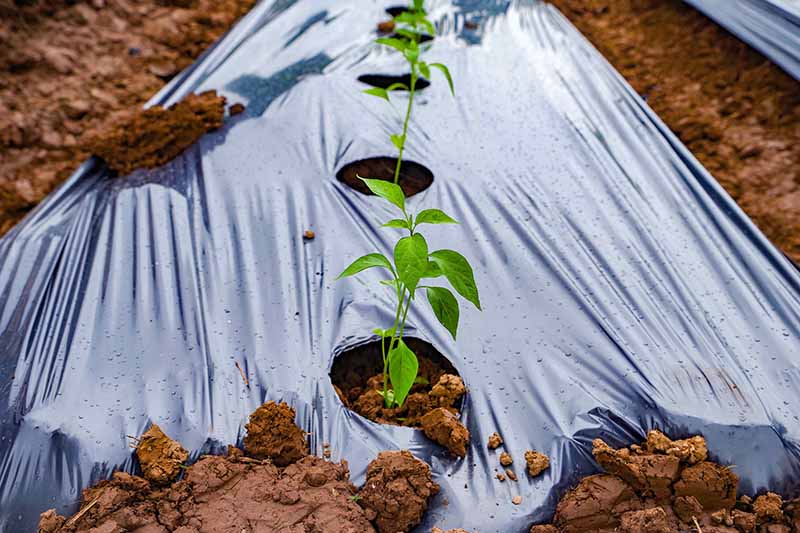
Bark is another common material that is very useful for mulching perennials and trees, but not the best option for annual veggies.
Bark breaks down slowly and it ties up some of the nitrogen in the soil, making it less available to plants until it has a chance to decompose, which can take a couple of years.
While this is no problem for slow-growing trees and perennials with deep roots, it isn’t ideal for your tomatoes.
Potential Downsides of Mulching with Straw
While straw is a great option overall for veggie gardens, there are a couple of potential drawbacks to be aware of. Fortunately, most of these have easy fixes.
This warm, fluffy, and soft material can be an attractive home for rodents, which is something to keep in mind especially if you tend to have issues with these pests. Regular watering can help keep rodents at bay.
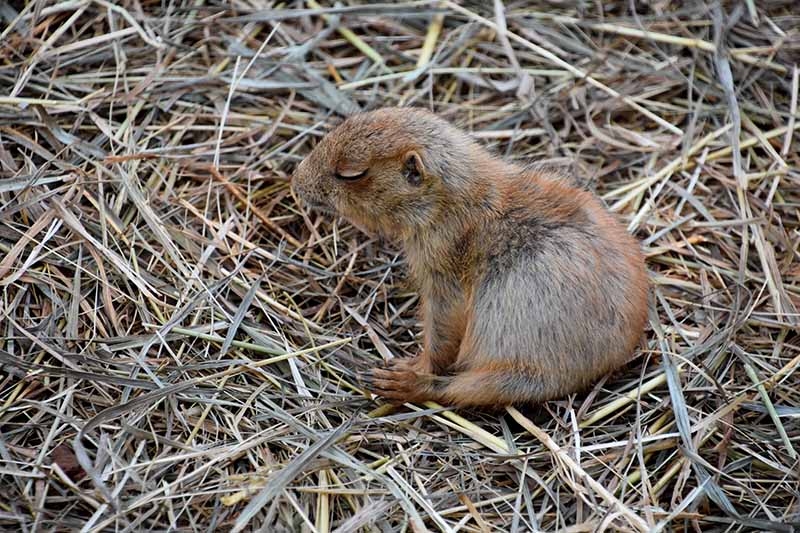
Not a major issue, but because it is light it is more likely than some other materials to blow away when you first lay it down.
This can easily be avoided by applying it on a calm day and watering soon afterwards to help weigh it down a bit.
Another thing to keep in mind is that straw is mostly carbon based. While it certainly adds some nutrients to the soil as it breaks down, it isn’t actually an amazing source of nitrogen for the garden.

This just means it is important to have sufficient nitrogen in your soil to avoid a nutrient imbalance.
One easy way to do this is to spread a layer of nitrogen-rich material around the bed prior to laying down straw. Compost, aged manure, or fresh grass clippings are all great sources of nitrogen.
Find a Source You Can Trust
Straw is readily available from local farmers and garden supply stores.
It comes in bales of various sizes, often somewhere around a few feet long by a foot or two wide and high. When purchasing bales, the most important thing is to know and trust your source.
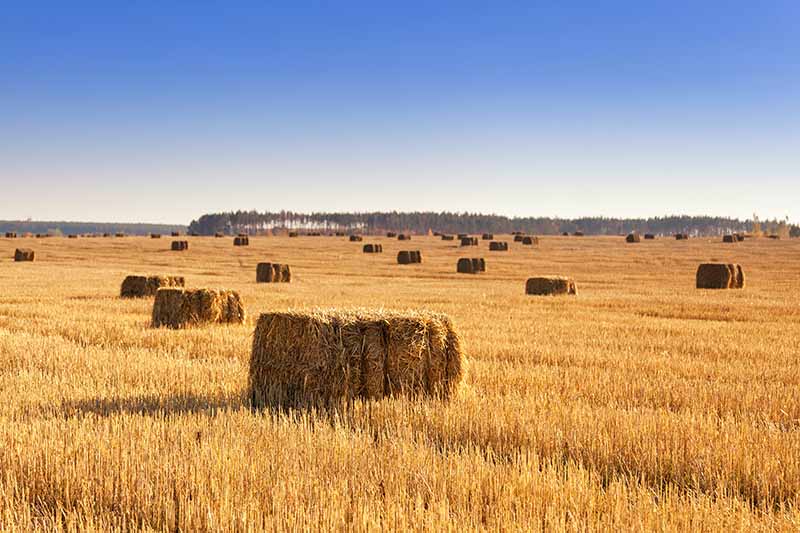
Look for something that is advertised as weed-free, and find out whether it has been treated with any pesticides or herbicides, especially if you are an organic gardener.
Keep in mind that any chemicals it has been sprayed with will wind up in your garden. If possible, source from a certified organic grower.
It is also a good idea to examine the bales before you take them home to make sure they are clean and not moldy or damp.
How to Mulch with Straw
Mulching a veggie garden with straw is easy.
You are ready to mulch a bed once your seedlings have been growing for at least a few weeks and are a few inches in height.
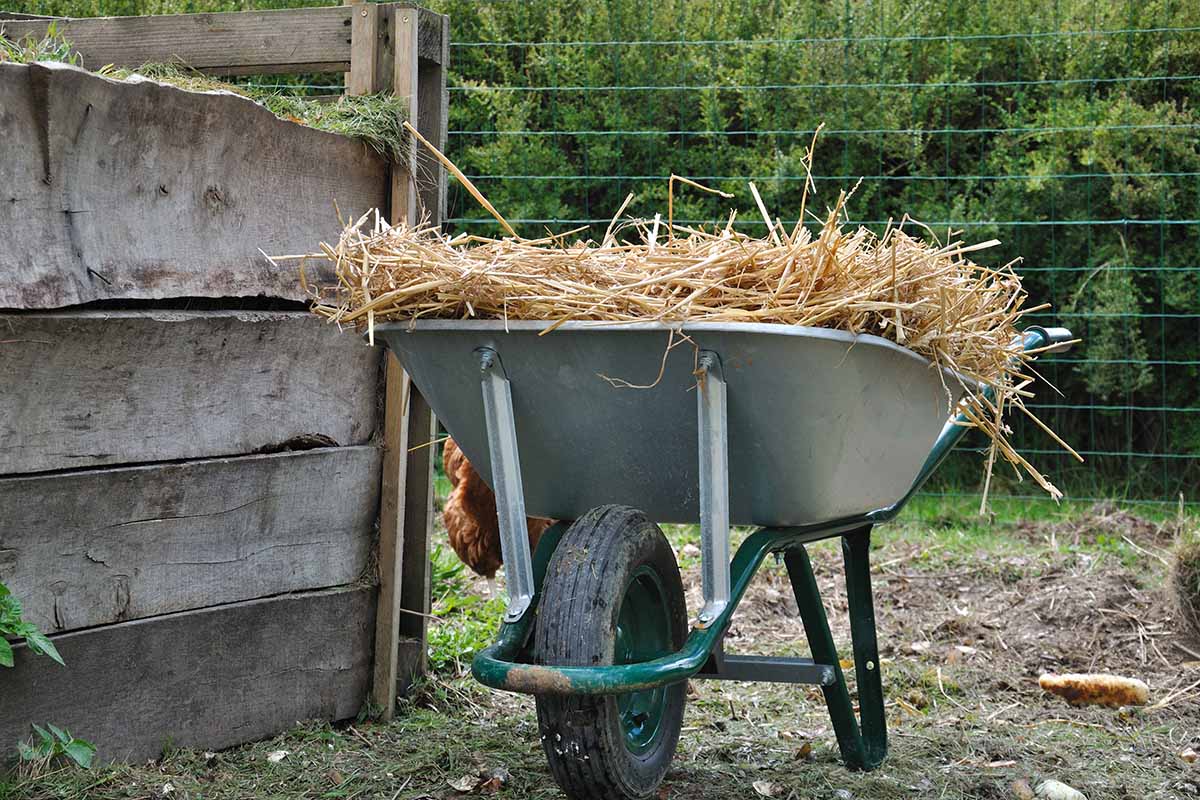
Do not apply mulch on top of seeds or tiny seedlings, so as not to smother them.
One exception to this is that just after seedlings sprout, you may sprinkle a very thin layer of straw on top of the bare soil to help protect it, but wait a few more weeks before mulching fully.
Before you begin, it is a good idea to add an inch or so of organic material such as compost, aged manure, worm castings, or grass clippings first, to ensure the soil is well balanced.
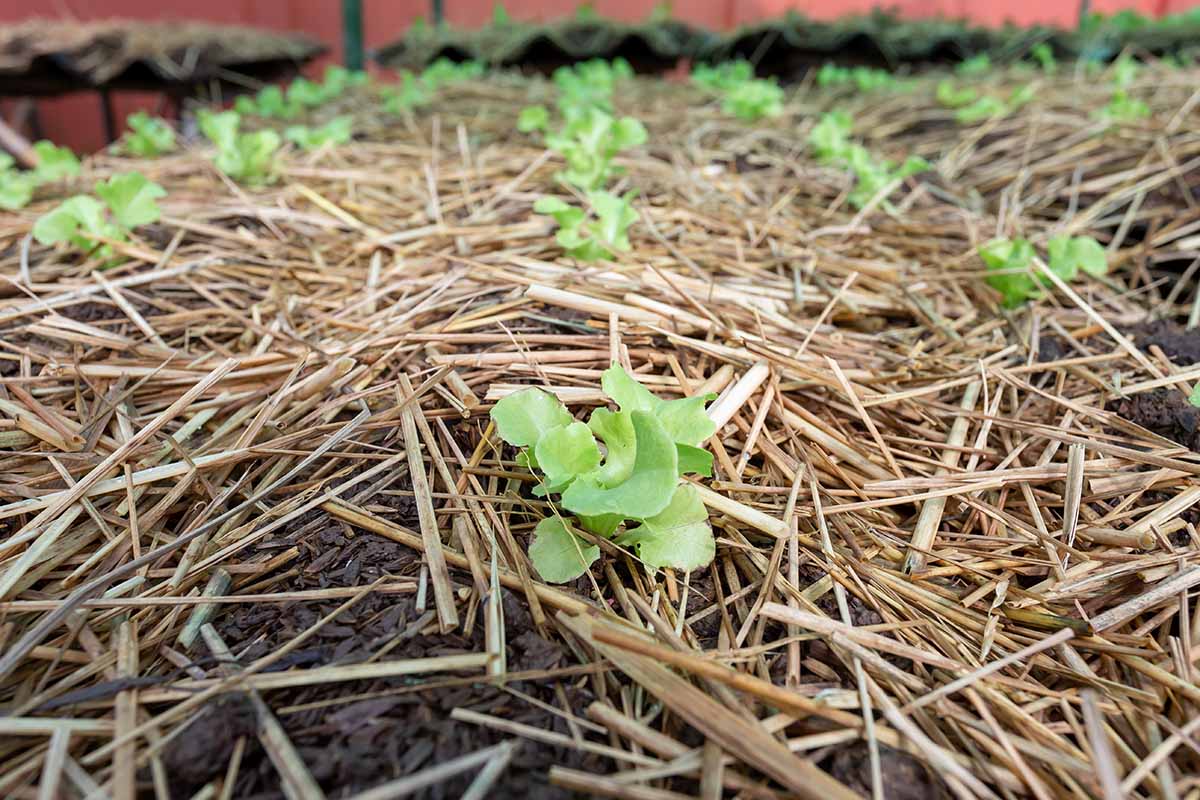
This is especially important if you know your soil to be deficient in nitrogen to begin with. Conducting a soil test can help to reveal any deficiencies.
Next, set the bale at the edge of a garden bed and cut the rope to open it up. Bales are made up of tightly packed layers of straw. Remove layers one at a time, and use your hands to fluff them up a bit.
Lay the material several inches thick between plants and in the walkways between rows, always leaving a couple of inches bare around the stems of each plant to allow for airflow and reduce the risk of disease.
In addition to using it around growing vegetables, you can also use straw to cover up fallow beds or to protect your garden during the winter.
You can choose to either remove it before planting and throw it in the compost, or you can simply push it to the side until you are ready to mulch again and then reuse it, adding a bit of fresh material on top.
As long as it isn’t visibly moldy, it is fine to let it decompose directly in the garden bed.
A World of Difference
If you can get your hands on some straw bales this season, you absolutely should try using it to mulch your vegetable garden.
You will likely find it makes a world of difference for the health of your crops, and it will drastically reduce your workload at the same time.
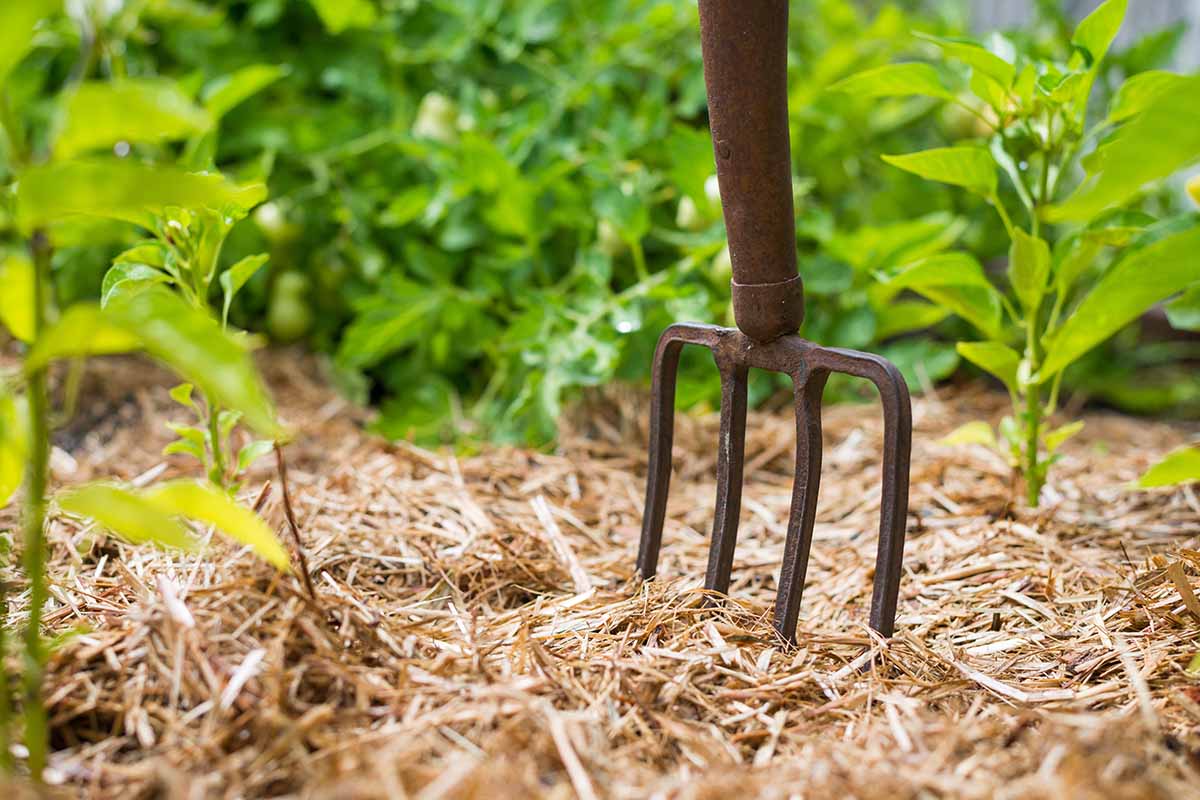
Have you tried mulching your veggie garden with straw? Share your experience in the comments below!
Want to dig deeper into using mulch to improve soil and reduce labor? Check out these articles for more ideas:
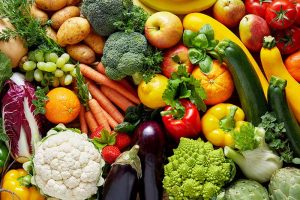
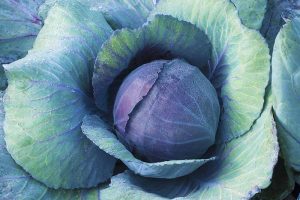
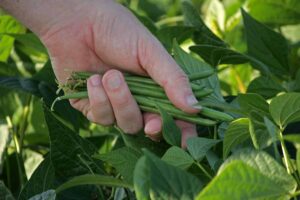
I use straw bales which take a really long time to break down. I am actually on my second year using the same straw for mulch, although it has compressed; so I will be adding new straw on top of old.
This was my first year of using straw as a mulch…while I appreciate that it reduced most of the weeds…it did not deter the horsetail one bit…I think the horsetails gained momentum and ground. Also as we had a wet year the slugs multiplied exponentially….now I am left wondering if I should remove the straw completely from my garden over winter so as to not harbour the slugs. Perhaps burn it in the garden? any suggestions?
Hi Lorna,
I’m sorry to hear that your experiment with straw mulch ended up being a boon to slugs in your garden. It sounds like removing the straw might be best in your situation. Instead of burning it, if I were you, I would put it in the compost bin instead.
Hope this helps!
I used straw mulch for the first time in my raised bed garden and had only a small amount of grass come up. I planted garlic last fall. Wondering if I should remove the straw over the garlic or will it come up through the straw? And should i remove the straw for planting and re-mulch or turn it into the soil?
Thank you.
Unless the straw is very thick, the garlic should come right up through the straw. If it is thick, you can simply thin it a bit until the garlic pokes through, and then reapply any that has been removed.
You can turn it into the soil if you choose, but I prefer to reuse it as mulch until it breaks down naturally. When I plant, I usually push the straw to the side and put it right back after I am done planting.
We laid straw down on our raised bed just yesterday after planting our veggies. Woke up today and there are a lot of house flies all around our garden now. Any tips for that? We were thinking lemon grass might assist?
Lemongrass oil does show effectiveness in repelling flies. But unfortunately your best best may be to remove the straw altogether. Stable flies are sometimes confused with house flies – was the straw acquired from a farm or stables where it may have been infested with the eggs and larvae of these pests? Pesky to get rid of, removing their breeding material from the garden (likely the wet straw, in this case) is usually the best course of action.
I used straw bought from a big box retailer for mulch this year for my raised garden beds, for my tomato plants started from seed. At first it seemed to work fine—seedlings did well and soil stayed moist. Then after some rain I saw the beds were permeated with grass – turned out the “straw” contained chaff/grain and wheat grass was sprouting up in the garden bed. I quickly removed the straw and tried to hand pull the grass, but tons of the seeds fell into the bed. I’m afraid grass has now taken root and it’ll ruin the garden… Read more »
Good morning Jess! I think I have good news for you. That type of straw looks like it has sprouted wheat or ryegrass. Those aren’t ideal, but they shouldn’t hurt the soil and in fact will probably enrich it. If you were sprouting Johnson grass, which looks quite different from straw when it’s dry, then you would have a real battle on your hands. I would pull the straw as it sprouts and let it dry in the sun before using it as mulch or adding it to the compost. The roots shouldn’t get too long or compete with the… Read more »
Can I add straw on top of a garden that is already growing?
Hi Stephen, do you mean applying it as a mulch around your plants? If so, absolutely you can.